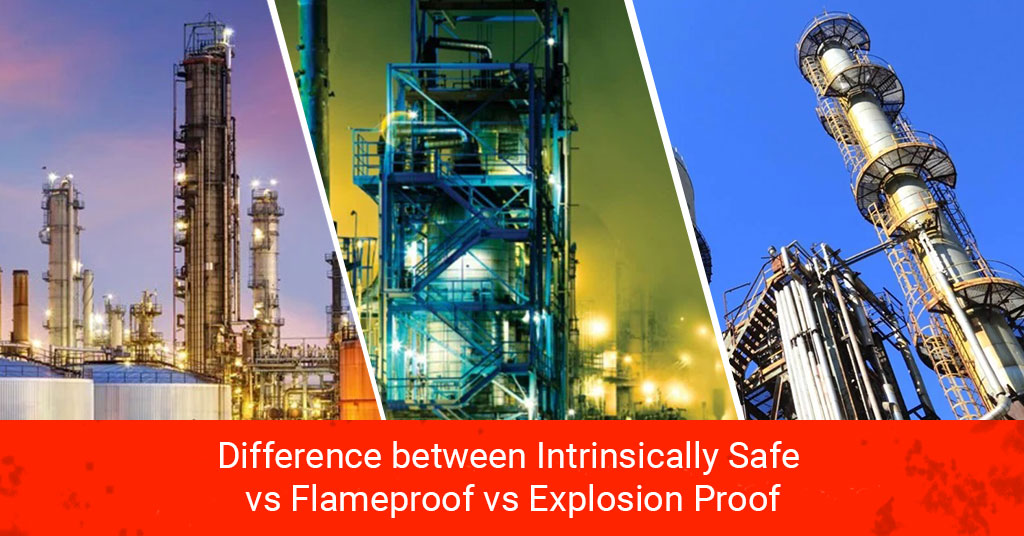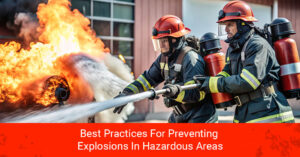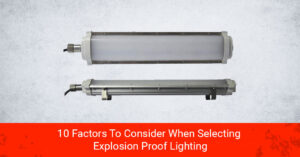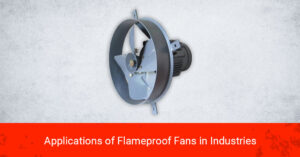Difference between Intrinsically Safe vs Flameproof vs Explosion Proof
Meet Ramdas– an experienced veteran in the flameproof industry. He has been developing flameproof products for more than 20 years, to custom-made products for different industries. His specialization includes oil & gas, chemical, and other high-risk industries, where he has consistently delivered solutions that meet the most stringent safety regulations.
In this blog, We will help you to know about intrinsic safety, flameproof, and explosion-proof equipment that protects from fire and explosions. It is crucial to understand these differences to guarantee the protection of labor, equipment and plants in dangerous conditions.
Understanding Intrinsically Safe
Intrinsically safe (IS) means that equipment is controlled to ensure it does not generate or release enough energy to ignite a hazardous gas or dust atmosphere.
How It Works
Intrinsically safe systems operate because electrical and thermal energy is reduced to safe levels. This is done with the help of devices like resistors, zener diodes, and isolators, which limit the energy transfer in the equipment.
Applications
IS equipment is commonly employed in industries that deal with the regular usage of flammable substances, including the oil & gas industries, chemical processing industries, and the mining industries.
Advantages and Limitations
- Advantages: Maintenance can be carried out in hazardous areas, high safety margin and low probability of ignition.
- Limitations: Offer limited power output which may not meet the requirement of all load types; they call for extra expenditures since specific engine parts are needed.
Understanding Flameproof
Flameproof equipment, referred to as Ex d, is equipment that, if subjected to an explosive atmosphere, ensures that the explosion occurs within the casing without spreading to the external environment.
How It Works
Flameproof enclosures function in the manner that they confine an explosion and do not allow the explosion to transfer to the outer environment. There are joints and flanges used in the construction of the enclosure to cool any gas that may leak out of the enclosure and minimise the chances of a flame ignition outside the enclosure.
Applications
Flameproof equipments are commonly used in industries such as petrochemicals, pharmaceuticals, and refineries, where the risk of explosions is high.
Advantages and Limitations
- Advantages: High durability, handling higher power equipment, and robust protection in highly explosive environments.
- Limitations: Larger and heavier enclosures, higher manufacturing and maintenance costs, and potential installation difficulties.
Understanding Explosion Proof
Explosion-proof equipment is specially constructed in a way that will not allow an explosion inside the equipment, i.e., it is fireproof. Unlike flameproof equipment with an explosion to control, explosion-proof equipment is designed to prevent the conditions that would cause an explosion in the first place.
How It Works
Explosion-proof equipment such as explosion-proof lights are designed so that the level of electrical or thermal energy within the equipment is not capable of causing an explosion. This is done so that the equipment is designed and constructed from materials enabling it to work in endangered environments.
Applications
Explosion proofs are applied when working with explosive mixtures of gases, vapour and dust and industries including oil & gas, chemical processing, and food processing sectors. Other use cases include explosion-proof control stations, which are fully ducted and enclosed.
Advantages and Limitations
- Advantages: Improved safety for use in toxic areas, generalized usage, and adherence to rigorous safety measures.
- Limitations: Higher costs, potential limitations on the types of equipment that can be used, and the need for regular inspection and maintenance.
Comparative Analysis
Feature | Intrinsically Safe | Flameproof (Ex d) | Explosion Proof |
Safety Principle | Limits energy to prevent ignition | Contains explosion within the enclosure | Prevents explosion through design |
Power Handling | Low | High | Moderate to High |
Size & Weight | Compact | Large and heavy | Varies |
Maintenance | Easier | Requires shutdown | Requires careful inspection |
Cost | Moderate | High | High |
Best Used In | Low-energy environments | High-risk explosive areas | Versatile hazardous areas |
Compliance and Certification
It is important to consider known industry standards when purchasing products and components deemed intrinsically safe, flameproof, or explosion-proof in design. Depending on the desired form, each type of protection shall include the appropriate criteria, ATEX, IECEx, UL, etc. Such certifications ensure the client that the equipment has undergone thorough tests and is safe to use.
Practical Considerations: Price, Need, Maintenance, and Inspection
When choosing between intrinsically safe, flameproof, and explosion-proof equipment, several practical considerations must be taken into account:
- Price: Intrinsically safe equipment might be cheaper regarding low-power operations due to the reduced risk involved; however, flameproof and explosion-proof are generally costly due to the increased physical design.
- Need: The type of protection to choose is up to the particularities of the environment where you operate about the identified risks and power demand.
- Maintenance and Inspection: It is indispensable for any equipment but concerns flameproof and explosion-proof equipment much more as such devices are usually rather complex in construction.
Conclusion
There are many different types of protection for when one will be in a hazardous area, it is therefore important to decide on the right kind of protection. By now, one must have probably made up his/her mind to choose either intrinsically safe or flameproof, or even explosion-proof equipment; the best, one can say, has been said to guide any such choice.
To learn more about flameproof panels and other products, visit our service pages or contact us for any related queries.
FAQs
- What are the key differences between intrinsically safe and flameproof equipment? The main difference lies in their safety principles. Intrinsically safe equipment limits the energy within the device to prevent ignition, making it ideal for low-power environments. In contrast, flameproof equipment is designed to contain an explosion within an enclosure, suitable for high-power devices in highly explosive environments. Can explosion-proof equipment be used interchangeably with flameproof equipment? No, explosion-proof and flameproof equipment are not interchangeable. Explosion-proof equipment prevents an explosion from occurring, while flameproof equipment contains an explosion within the device.
- What are the maintenance requirements for intrinsically safe vs. flameproof equipment? Intrinsically safe equipment generally requires less intensive maintenance since it is designed to operate with limited energy, reducing the risk of ignition. Flameproof equipment, however, requires regular inspections and maintenance, particularly of the enclosure seals and joints, to ensure it effectively contains any potential explosions.








